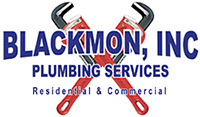Water line issues can be a homeowner’s nightmare, leading to significant inconvenience and potential damage to your property. While some plumbing problems undoubtedly require the expertise of a professional, understanding the basics of DIY water line repairs can empower homeowners to tackle minor issues promptly, potentially saving time and money. This guide aims to demystify the process of water line repair, providing you with the knowledge and confidence to address straightforward plumbing tasks.

The Importance of Prompt Repairs
Delaying water line repairs can exacerbate problems, leading to increased water bills, water damage, and costly professional interventions. Identifying and addressing leaks or damages early on can mitigate these risks, preserving the integrity of your home’s plumbing system.
Tools and Materials Needed
Before embarking on any DIY water line repair, ensuring you have the right tools and materials is essential. Common necessities include:
- Adjustable wrenches
- Pipe cutters
- Teflon tape
- Replacement pipes and fittings
- Protective gear
Understanding the specific requirements of your repair project will help streamline the process and prevent unnecessary interruptions.
Identifying Common Water Line Issues
Several signs indicate potential water line issues, including reduced water pressure, discolored water, or unexplained wet areas in your yard. Learning to recognize these signs can help you diagnose problems effectively and determine whether a DIY approach is feasible.
Step-by-Step Guide to Simple Repairs
Locating the Leak
The first step in any repair is accurately locating the source of the leak. This may involve visual inspections, listening for the sound of escaping water, or using moisture meters to identify wet areas along your water line.
Shutting Off the Water Supply
Before attempting any repairs, it’s crucial to shut off the water supply to prevent further damage and ensure a safe working environment.
Repairing or Replacing Damaged Sections
Depending on the nature of the damage, repairs may involve tightening fittings, applying sealant to minor leaks, or cutting out and replacing sections of pipe. Detailed instructions and tutorials can guide you through this process, ensuring that repairs are performed correctly.
When to Call a Professional
While DIY repairs can be effective for minor issues, recognizing when to call in a professional is crucial. Complex repairs, significant leaks, or problems involving main water lines typically require the expertise of a licensed plumber.
Preventive Measures
Regular maintenance and inspections can help prevent future water line issues. This includes monitoring water pressure, avoiding the disposal of inappropriate materials down drains, and protecting pipes from freezing temperatures.
Arming yourself with basic plumbing knowledge and the right tools can make DIY water line repairs a viable option for addressing minor issues. However, understanding the limits of DIY repairs and when to seek professional assistance is key to maintaining a safe and functional water system in your home.
DIY Methods for Simple Water Line Repairs
DIY methods for simple water line repairs can often provide a quick fix for minor issues. Techniques such as using epoxy putty or clamp-and-hose repair kits offer temporary solutions that can prevent water damage and buy time until professional help is available. For homeowners, acquiring basic plumbing skills and understanding when and how to use these methods can significantly contribute to maintaining their property’s plumbing integrity.
Water Line Repair
Water line repair encompasses a range of techniques, from simple DIY fixes to complex professional interventions. Whether tightening a loose connection, replacing a worn-out washer, or undertaking more significant pipe replacements, understanding the basics of water line repair is invaluable for homeowners. It not only helps in promptly addressing minor issues but also in comprehensively assessing when to seek the expertise of professional plumbers like Blackmon Plumbing, ensuring that your home’s plumbing system remains in optimal condition.
